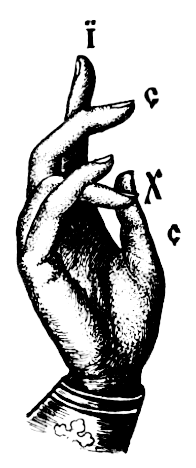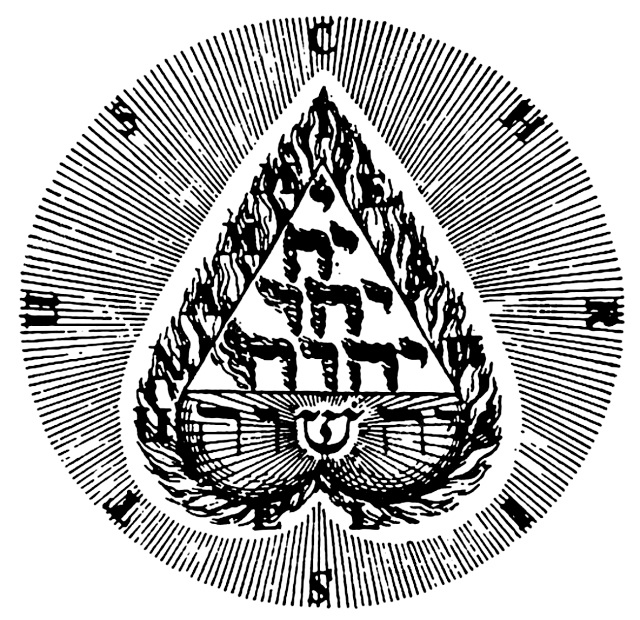Behold! The Jasper and The Sardine!
- טימותי לורנס
- Jul 18, 2022
- 7 min read
Updated: Dec 12, 2022

John uses the precious stones Jasper and Sardine (or Carnelian) in his description of The Throne in Heaven, as was shown to him in his Revelation. I have recently learned something extremely significant about these two stones and wanted to share this, as it shows a deeper level of perfection given to us in scripture. We are told the following in Revelation, Chapter Four:
After this I looked, and, behold, a door was opened in heaven: and the first voice which I heard was as it were of a trumpet talking with me; which said, Come up hither, and I will shew thee things which must be hereafter.
And immediately I was in the spirit: and, behold, a throne was set in heaven, and one sat on the throne.
And he that sat was to look upon like a jasper and a sardine stone: and there was a rainbow round about the throne, in sight like unto an emerald. - Revelation 4:1-3
If we compare John's vision of The Divine Throne with Ezekiel's vision, it's obvious that they are both describing the same thing. I have covered this before in an earlier post, but I wanted to point that out here as well. They both mention the rainbow of colors that surrounded Him. Both John and Ezekiel compare The One who sits on The Throne to Fire.
Above the expanse over their heads was the likeness of a throne with the appearance of sapphire, and on the throne high above was a figure like that of a man.
From what seemed to be His waist up, I saw a gleam like amber, with what looked like fire within it all around. And from what seemed to be His waist down, I saw what looked like fire; and brilliant light surrounded Him.
The appearance of the brilliant light all around Him was like that of a rainbow in a cloud on a rainy day. This was the appearance of the likeness of the glory of the LORD. And when I saw it, I fell facedown and heard a voice speaking.
Ezekiel 1:26-28
In just the two words Jasper and Sardine, John is giving us a much deeper meaning that is often overlooked. First off, I have found that most all English translations agree on the first stone is Jasper. However, there are there seems to be some dispute as to what the second stone actually was. Depending on the translation that you're looking at, it could say "carnelian", "ruby" or "sardius". I'm no gemstone expert, so I had to dig into this and see why these different stones are all mentioned and which one is correct. Anytime this is the case, we always need to go back to text the original language that was given to us.
Here is the original Greek that we were given:
Strong's 2393 - ἴασπις (Iaspis) and is defined as "jasper; a precious stone".
Strong's 4556 - σάρδιος (Sardion) and is defined as "sard, a sardian stone / carnelian, a precious stone".
So the first question is obvious, which stone is it; the Sardius, the Carnelian or the Ruby? The answer is Yes...as it can be any of these three. Evidently carnelian is sard, which is generally harder and darker and the difference is not rigidly defined, and the two names are often used interchangeably and a ruby is very comparable to a sard as well. Sard is a translucent chalcedony that is brown to dark reddish-brown. Sard is darker and browner in tone than carnelian.
Below are typical examples of both a Carnelian (Sard) and of a Ruby:


A Jasper stone is a an opaque, fine-grained, or dense gemstone that comes in a variety of colors. The most common color, brownish-red, comes from admixed hematite. Other colors can occur when Jasper is clay admixed, causing it to be yellow, white, gray, or multi-color. Very rarely, you may find Jasper in green or blue. Jasper stones can also form when volcanic ash or fine pyroclastics bond with silica precipitation into a solid material.
Below are the best visual representations of Japer that I was able to find:


Without getting too carried away about these stones and their many shades of colors, we need to understand that both of these stones contain the shades of colors observed in fire, which is what John was describing. Another significant reason that he use these two particular stones, as because they describe the first and last stones on Aaron's Breastplate, detailed in the Book of Exodus. In Chapter 28, Moses was given detailed instructions to make a breastplate, to be worn by The High Priest. This breastplate had twelve different gemstones, one for each of the twelve tribes of Israel.

You are also to make a breastpiece of judgment with the same workmanship as the ephod. Construct it with gold, with blue, purple, and scarlet yarn, and with finely spun linen.
It must be square when folded over double, a span long and a span wide.a
And mount on it a setting of gemstones, four rows of stones:
In the first row there shall be a ruby, a topaz, and an emerald;
in the second row a turquoise, a sapphire, and a diamond;
in the third row a jacinth, an agate, and an amethyst;
and in the fourth row a beryl, an onyx, and a jasper.
Mount these stones in gold filigree settings.
The twelve stones are to correspond to the names of the sons of Israel, each engraved like a seal with the name of one of the twelve tribes.
Exodus 28:15-21
The twelve tribes are named after the twelve sons of Jacob; Reuben, Simeon, Levi, Judah, Dan, Naphtali, Gad, Asher, Issachar, Zebulun, Joseph and Benjamin. The two stones that we're concerned about here are the first and last stones of the breastplate, thus representing Reuben and Benjamin; the firstborn and youngest, respectively.
Reuben ( ראובן ) was the first of the six sons of Jacob and Leah. He was the founder of the Israelite Tribe of Reuben. The Stone that represents his tribe is a Ruby (or Carnelian / Sard). The meaning of the name Reuben is "Behold, a Son".


The Jasper stone represents that tribe of Benjamin ( בנימין ). The meaning of the name Benjamin is “Son of The Right Hand.”


Knowing this information, we can see a couple of hidden truths revealed here. Not only do these two stones make an obviously reference to the First and Last, Alpha ( Ἄλφα ) and the Omega ( Ὦ ) - or the Aleph ( א ) and Tav ( ת ) in Hebrew - the literal meanings of the names "Reuben" and "Benjamin" are "Behold, a Son" and "Son of The Right Hand." We know that Yeshua (Jesus in English) is not only The Only Begotten Son of G*d, we are also told (several times) that He sits at the Right Hand of The Father.
The Right Hand Seat:
"A Psalm of David. The Lord says to my Lord: “Sit at my right hand, until I make your enemies your footstool.” - Psalm 101:1
"Jesus said to him, “You have said so. But I tell you, from now on you will see the Son of Man seated at the right hand of Power and coming on the clouds of heaven.” - Matthew 26:64
"So then the Lord Jesus, after he had spoken to them, was taken up into heaven and sat down at the right hand of God." - Mark 16:19
"But from now on the Son of Man shall be seated at the right hand of the power of God.” - Luke 22:69
"But he, full of the Holy Spirit, gazed into heaven and saw the glory of God, and Jesus standing at the right hand of God. And he said, “Behold, I see the heavens opened, and the Son of Man standing at the right hand of God.”" - Acts 7:55-56
"Who has gone into heaven and is at the right hand of God, with angels, authorities, and powers having been subjected to him." - 1 Peter 3:22
"If then you have been raised with Christ, seek the things that are above, where Christ is, seated at the right hand of God." - Colossians 3:1
"Who is to condemn? Christ Jesus is the one who died—more than that, who was raised—who is at the right hand of God, who indeed is interceding for us." - Romans 8:34
"He is the radiance of the glory of God and the exact imprint of his nature, and he upholds the universe by the word of his power. After making purification for sins, he sat down at the right hand of the Majesty on high,"
Hebrews 1:3
"But when Christ had offered for all time a single sacrifice for sins, he sat down at the right hand of God," - Hebrews 10:12
"Now the point in what we are saying is this: we have such a high priest, one who is seated at the right hand of the throne of the Majesty in heaven," - Hebrews 8:1
"Looking to Jesus, the founder and perfecter of our faith, who for the joy that was set before him endured the cross, despising the shame, and is seated at the right hand of the throne of God." - Hebrews 12:2
The Alpha Omega


Yeshua tells us "I am the Alpha ( Ἄλφα ) and the Omega ( Ὦ )" three times in the Revelation, so He is obviously trying to tell us something deeper by reiterating this so much.
“I am the Alpha and the Omega,” says the Lord God, “who is and who was and who is to come, the Almighty.” - Revelation 1:8
"And he said to me, “It is done! I am the Alpha and the Omega, the beginning and the end. To the thirsty I will give from the spring of the water of life without payment." - Revelation 21:6
"I am the Alpha and the Omega, the first and the last, the beginning and the end.” - Revelation 21:13
As previously stated, the Alpha ( Ἄλφα ) and the Omega ( Ὦ ) is the same as the Aleph ( א ) and Tav ( ת ) in Hebrew. If you have been following my previous posts, you will know that every Hebrew letter has its own meaning. Now, let’s examine this את Alpeh-Tav word (pronounced as Et), which has no defined translation into any language. This is THE WORD!
א = Aleph - יהוה HaShem / The LORD
ת = Tav - Cross

בראשית ברא אלהים את השמים ואת הארץ
“In the beginning, God created the heavens and the earth.” - Genesis 1:1 ESV
“In the beginning was the Word, and the Word was with God, and the Word was God.” - John 1:1 ESV
Rather than trying to go through all of these truths again, I recommend you check the following posts:
Explanation of YESHUA The WORD (John 1:1 & Genesis 1:1)
Astounding Divine Perfection in Genesis 1:1 and John 1:1
חסד ושלום עליכם והרבה אהבה וברכות
May Grace and Peace Be Upon You and Much Love and Blessings!


















Without payment. Money can't cover the covering of sins!
Man you inspire me every day